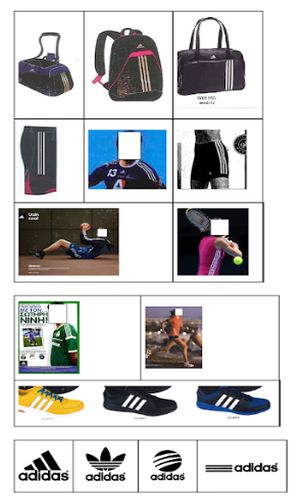By way of background, in 2014 Shoe Branding Europe filed an invalidation action against adidas AG's EU Registration No. 12442166 on the grounds that that mark was devoid of distinctive character. The registration was for a figurative three-striped mark, namely:

The mark was described as "consisting of three parallel equidistant stripes of identical width, applied on the product in any direction" for goods in class 25 including clothing, footwear and headgear.
The EUIPO Cancellation Division held in favour of Shoe Branding Europe and adidas's registration was invalidated. On appeal, adidas claimed that the mark had acquired distinctive character through use. Rejecting this argument, the Second Board of Appeal of EUIPO upheld the earlier decision and found that adidas failed to submit sufficient evidence demonstrating the mark had acquired distinctive character through use within the EU.
adidas further appealed the decision to the General Court where the following various issues were examined.
1. Did the Board of Appeal misinterpret the mark?
adidas claimed that the mark was a surface pattern mark, despite being registered as a figurative mark. As such, when the mark is in use, it could be reproduced in different dimensions and proportions dependant on the type and material of the goods on which the mark was applied.
The General Court disagreed with adidas holding that the courts may not take into consideration characteristics of the mark that are not set out in the application. The description of the mark does not specify that the length of the stripes could be modified or that the stripes could be cut at a slanted angle dependant on the goods. Therefore, it was confirmed that the scope of protection of a trademark is limited to the graphical representation of the mark and its description as shown on the Register.
2. Did the Board of Appeal misapply the 'law of permissible variations'?
The "law of permissible variations" derives from Article 5C(2) of the Paris Convention and permits use of a trade mark in differing forms provided the distinctive character of the mark is not altered. Although adidas produced evidence of use of the mark, including images of clothing, footwear and headgear bearing the mark, the General Court upheld the Board of Appeal's findings that:

i. where a trademark is extremely simple, even a slight difference could lead to a significant alteration to the characteristics of the mark as it had been registered;
ii. use of the mark at issue in the form where the colour scheme is reversed necessarily alters the distinctive character of that mark;
iii. some of the evidence showed a sign with two instead of three stripes and;
iv. the use of sloping stripes altered the distinctive character of that mark.
Specifically, the following evidence failed to show genuine use of the mark:
Importantly, the General Court found the evidence of use submitted by adidas as "differing significantly" from the registered form of the three-stripe mark. Therefore, the Board of Appeal did not contravene the law of permissible variations.
3. Did the evidence of use establish acquired distinctive character?
Next, the General Court considered whether the evidence submitted by adidas demonstrated acquired distinctive character through use within the EU. The evidence included 12,000 pages of images depicting the mark on a range of goods, an affidavit presenting figures relating to turnover, marketing and advertising expenses, and several market surveys.
The General Court criticised the evidence on several grounds. It held that the images failed to show the mark in its registered form, did not indicate the duration of use and included goods that were not covered by the registration. While the financial figures including turnover and advertising expenditure were viewed as "impressive," the Court noted that the figures concerned the entire business and not just the mark and the relevant goods at issue. The Court did, however, consider five market surveys to be material.
Overall, the court held, the evidence was not sufficient to find acquired distinctiveness and the General Court dismissed the appeal.
Lessons learned
This case follows on from the decision of the Cancellation Division of the EU Intellectual Property Office which recently revoked McDonald's BIG MAC trade mark registration for failing to prove genuine use in the EU; discussed further in Finnegan's Incontestable Blog here. As consumers, high profile marks like McDonald's BIG MAC and adidas's three-striped mark are easily recognisable and therefore, it is easy to forget the high burden of proof that comes with defending a registration in the EU. This case serves as another reminder to trademark owners to keep thorough records of trademark use. Despite submitting almost 12,000 pages of evidence before EUIPO, adidas was nonetheless criticised by the Cancellation Division and the Board of Appeal for failing to produce evidence of actual use of the mark at issue.
Given the Court's strict interpretation of the scope of protection afforded by the graphical representation as portrayed in the registration, this case should also encourage trademark owners to review their portfolios in the EU and ensure that their registrations accurately reflect how the trademark is used. Trademark owners should note that the act of reversing the colour scheme can alter the distinctive character of a mark and call into question the registered mark's validity, particularly for less elaborate marks.
The case is adidas AG v. European Union Intellectual Property Office, Judgment of the General Court (Ninth Chamber, Extended Composition) of 19 June 2019, Case T 307/17.
The content of this article is intended to provide a general guide to the subject matter. Specialist advice should be sought about your specific circumstances.

